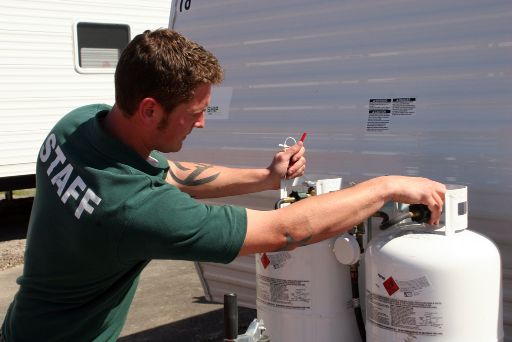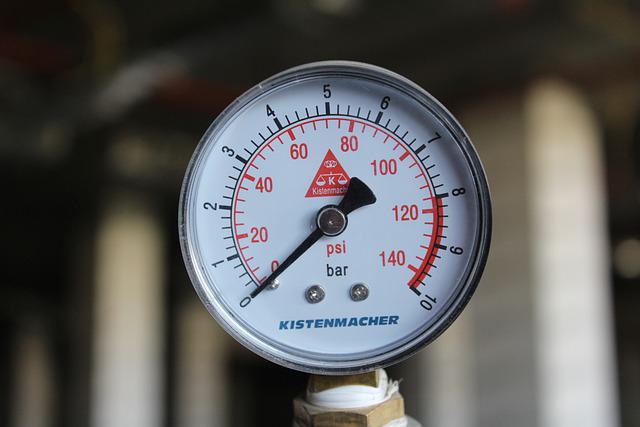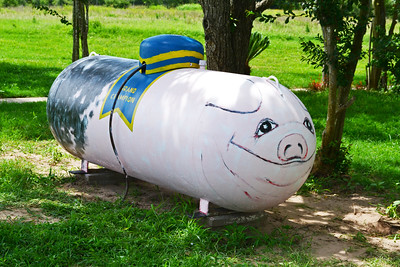
Carrying a propane tank on your back might seem like a convenient solution for outdoor activities like camping, hiking, or remote work.
However, it’s important to understand the potential risks involved. This article will guide you through the dangers of carrying a propane tank on your back and offer practical tips to do it safely.
Whether you’re an outdoor enthusiast or need to transport propane for work, knowing the proper techniques and safety measures is crucial to prevent injuries and accidents.
Reasons Why It Is Not Advisable to Carry a Propane Tank on Your Back
- Musculoskeletal Injuries: Carrying a heavy load like a 20-pound propane tank can cause significant strain on your back and shoulders, leading to injuries such as muscle strains and spinal disc compression.
- Balance and Stability Issues: A standard 20-pound propane tank, when filled, weighs around 37 pounds. This extra weight can disrupt your balance, increasing the risk of falls, especially on uneven terrain.
- Risk of Propane Leaks: Propane is stored under pressure (typically around 150-200 psi in standard tanks). The physical movement and jostling involved in carrying the tank on your back can increase the risk of valve or hose damage, leading to potential leaks.
- Impact Damage: A fall or sudden impact could damage the tank’s structural integrity. Even a small dent can compromise the safety of the tank, increasing the risk of a leak or explosion.
- Environmental Hazards: Propane is a highly flammable hydrocarbon (C3H8). A leak in a natural environment can lead to significant fire hazards, particularly in dry or forested areas.
- Transportation Regulations: According to DOT (Department of Transportation) regulations, transporting hazardous materials like propane requires specific safety measures. Carrying a propane tank on your back might not meet these regulations, potentially leading to legal issues.
- Pressure Relief Valve Concerns: Propane tanks are equipped with a pressure relief valve to prevent over-pressurization. Carrying the tank in a non-upright position can impair the valve’s function, increasing the risk of a dangerous pressure build-up.
- Heat and Ventilation Issues: When carrying a propane tank on your back, body heat and lack of proper ventilation can cause the tank to heat up, potentially increasing internal pressure and the risk of leaks.
- Ergonomic Concerns: Proper ergonomic practices recommend keeping heavy loads close to the body’s center of gravity to reduce strain. Carrying a bulky propane tank on your back violates this principle, leading to increased physical stress and potential injury.
Physical Risks of Carrying a Propane Tank
Carrying a propane tank on your back can lead to several physical risks:
- Musculoskeletal Injuries:
- Back Pain: The weight of a propane tank can put a lot of strain on your back muscles, leading to pain and discomfort.
- Strains and Sprains: Lifting and carrying a heavy tank can cause muscle strains or ligament sprains, particularly in your back, shoulders, and neck.
- Importance of Proper Lifting Techniques and Posture:
- Lifting Techniques: It’s crucial to use proper lifting techniques to avoid injury. This means bending your knees, keeping your back straight, and using your legs to lift the tank.
- Posture: Maintaining good posture while carrying the tank can help distribute the weight evenly and reduce strain. This includes keeping your shoulders back, your head up, and avoiding twisting movements.
- Potential for Accidents:
- Imbalance: Carrying a heavy and bulky propane tank can throw off your balance, making it easier to trip or fall.
- Falls: A fall while carrying a propane tank can lead to serious injuries, not only to yourself but also to others around you. The tank itself can become a hazardous projectile in the event of a fall.
Understanding these physical risks highlights the importance of using proper techniques and considering safer alternatives for transporting propane tanks.
Common Reasons for Carrying a Propane Tank on Your Back
There are a few common reasons why someone might need to carry a propane tank on their back. Let’s go through them in simple terms:
- Camping: When you’re camping, especially in remote areas, you might need a propane tank to fuel your camping stove or heater. Carrying it on your back can seem like a good idea to keep your hands free and move around easily.
- Remote Work: Some jobs, like construction or maintenance work in remote locations, might require portable fuel sources. If you’re working far from a vehicle or other transport options, you might have to carry a propane tank to run your tools or equipment.
- Outdoor Cooking: If you’re having a barbecue or cooking outdoors, and there’s no easy way to transport your propane tank, you might think about carrying it on your back to get it to the site.
Necessity vs. Convenience
- Necessity: Sometimes, carrying a propane tank on your back is necessary because there are no other options. For example, if you’re deep in the woods and need to cook or heat something, you might have no choice but to carry the tank yourself.
- Convenience: Other times, it might seem like the easiest way to transport the tank, especially if you want to keep your hands free for other tasks or if you’re navigating rough terrain where a cart or vehicle can’t go.
While it might feel necessary or convenient to carry a propane tank on your back in these situations, it’s important to understand the risks involved and explore safer alternatives whenever possible.
Alternative Transportation Methods
When it comes to transporting propane tanks, there are safer and more efficient methods available:
- Better Options Available:
- Using a Cart: A sturdy cart designed for carrying heavy loads can make transporting a propane tank much easier and safer. It allows you to move the tank without having to lift it, reducing the risk of injury.
- Using a Vehicle: If possible, use a vehicle that is specifically designed for transporting hazardous materials like propane. Vehicles with secure storage areas can keep the tank stable and upright during transport, minimizing the risk of leaks or accidents.
- Purpose-Built Gear:
- Specialized Backpacks: There are backpacks designed specifically for carrying propane tanks. These backpacks have features like reinforced straps, secure compartments, and proper padding to distribute the weight evenly, making it safer to carry the tank.
- Equipment for Stability: Some equipment includes harnesses or braces that keep the propane tank stable and secure, reducing the chances of it tipping over or moving around too much.
By using these alternative methods and specialized gear, you can significantly reduce the risks associated with carrying a propane tank on your back. These options not only enhance safety but also make the task more convenient and manageable.
Carrying Techniques
While it is generally not advisable to carry a propane tank on your back, if you find yourself in a situation where you need to do so, here are some detailed tips to help you carry it more safely:
- Best Practices for Lifting and Placing the Backpack:
- Use Your Legs: When lifting the propane tank, bend your knees and squat down rather than bending at your waist. Keep your back straight and use your leg muscles to lift the tank. This reduces the strain on your back and helps prevent injuries.
- Get Help: If possible, ask someone to assist you in lifting the propane tank and placing the backpack on your back. This can help distribute the weight more evenly and reduce the risk of muscle strain or injury.
- Secure the Tank: Ensure that the propane tank is securely fastened in the backpack. Use straps and buckles to hold it in place, preventing it from shifting around as you move. This not only helps with balance but also reduces the risk of leaks or damage to the tank.
- Tips for Maintaining Proper Posture and Avoiding Strain:
- Keep Your Back Straight: Maintain a straight back to avoid hunching or leaning forward. Good posture helps distribute the weight more evenly across your body and reduces the risk of back strain. Imagine a straight line running from your head to your heels and try to keep your spine aligned with it.
- Distribute the Weight: Adjust the backpack straps so that the weight is evenly distributed across your shoulders and hips. This means tightening the shoulder straps and using a waist belt if available. The waist belt helps transfer some of the weight from your shoulders to your hips, which are better suited to carrying heavy loads.
- Take Breaks: If you are carrying the propane tank for an extended period, take regular breaks. Set the backpack down, rest, and stretch your muscles to prevent fatigue and reduce the risk of injury. This is especially important if you start to feel any discomfort or pain.
- Techniques for Distributing Weight Evenly:
- Use a Waist Strap: Many backpacks designed for heavy loads come with a waist strap. Use this strap to secure the backpack around your waist, which helps distribute the weight more evenly across your hips and lower body. This reduces the strain on your shoulders and back.
- Adjust Shoulder Straps: Make sure the shoulder straps are snug but not too tight. Properly adjusted straps keep the backpack close to your body and prevent it from swaying side to side. This improves your balance and reduces the risk of falls.
- Balance the Load: Ensure that the propane tank is centered and balanced in the backpack. If the tank is off-center, it can cause uneven weight distribution, leading to increased strain on one side of your body and making it harder to maintain your balance.
By following these detailed tips, you can minimize the risks associated with carrying a propane tank on your back and make the task more manageable. However, always prioritize safety and consider alternative transportation methods whenever possible to avoid potential hazards.
To Make a Conclusion
Carrying a propane tank on your back can be risky and is generally not advisable. It can lead to back pain, muscle strains, and accidents due to imbalance. If you absolutely need to carry one this way, use proper lifting techniques, maintain good posture, and ensure the tank is securely fastened. Remember to distribute the weight evenly and take breaks to avoid strain.
However, the best option is to use safer alternatives like a cart or specialized backpack designed for propane tanks. Prioritizing safety can help prevent injuries and ensure you handle the propane tank without issues.

Mike is an experienced propane technician with over 15 years of professional experience in the field. He has dedicated his career to helping customers with their propane needs, from installation to maintenance and repair. Together with Jeremy, he co-founded this website to provide useful information and guidance to customers seeking reliable propane services.




